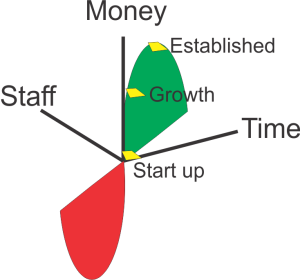My questions, as I took my seat at an alfresco table where the others were already gathered was, “What is the musical theme of our group? Do each of us have a couple of notes that might identify us? What is the melody of this group?”
 Kate, our sales doyen put a hand on my forehead and said, “His temperature feels normal, but crazy doesn’t generate a fever, does it?”
Kate, our sales doyen put a hand on my forehead and said, “His temperature feels normal, but crazy doesn’t generate a fever, does it?”
“I’ve been thinking about this for a week,” I said. “I had my ears opened last Saturday. Arthur is one of my valued resources. He runs a very successful web site development company.
He is also a composer. (listen in here)
Last Sunday he revealed his work for a composer’s contest to a group of friends in a home concert. About 25 of us squeezed into his living room around a baby grand and were taken into his creative process.”
Rick asked, “What do you mean, taken in?”
“He literally walked us through how he developed a composition for this contest. This was one of those fortuitous situations when I was already thinking about music because a friend asked me what one thing I was going to do as a result of attending the National Speakers Association meeting in Washington D.C.My answer was I’m going to add intro music to my speaking website and my speaking introduction.
I’ve already got Arthur working on it.”
“Y’all know I couldn’t carry a tune in a bucket with a lid on it, said Rob, our branding wizard. But there’s things that music can do for a brand you cain’t do no other way. I may be a child of the south and I do like country rock but every kind of music can put a hex on you if it matches up with your perspective on a product or service. If it’s right, jus’ one or two notes touch the “wareness and preference centers in your brain.”
“You’re right on, Bubba,” I said. Arthur did variations on the theme that included a ragtime immediately followed by a tango. He made it silly and sad and joyous. In just a few minutes his composition took us on a life journey. Along the way he used that elusive ability of music to take us to places all of us have been and to show us how those emotions can be tapped into with as little as two notes.
”Gail asked, “Did he prompt you or just let you guess about the scores?”
“No prompting was required. He played two notes and all of us could see the fin breaking the water. He talked about how Star Wars had re-introduced the idea of a full movie score. He let us hear why we knew something foreboding was on its way and how music could help us envision someone on screen thinking about another character.”
Kate leaned back, took a pull on her iced tea and said, “So you’re suggesting that each of us has a theme and that somehow they combine to make a mini-symphony each time we gather.”
“No, I wasn’t but if I were producing these blogs as radio plays that would be a brilliant idea!”
The Takeaway:
Music has the ability to use your emotions to build memory hooks that resonate regardless of how long it has been since you heard as little as two notes.
______________________________________________________________________
Jerry Fletcher’s blog recaps conversations with clients, prospects and the unruly mob of business development professionals he consorts with. They discuss marketing that works from solopreneur to enterprise level. Jerry Fletcher is the ringleader and “Watson” of the dialogue.
Jerry has been researching and implementing small business marketing that builds businesses, careers and lives of joy for 25 years as President of Z-axis Marketing, Inc. Learn more at www.JerryFletcher.com
Schedule a personal appearance. Jerry speaks internationally on Networking, Marketing and Contact Relationship Magic. www.NetworkingNinja.com









